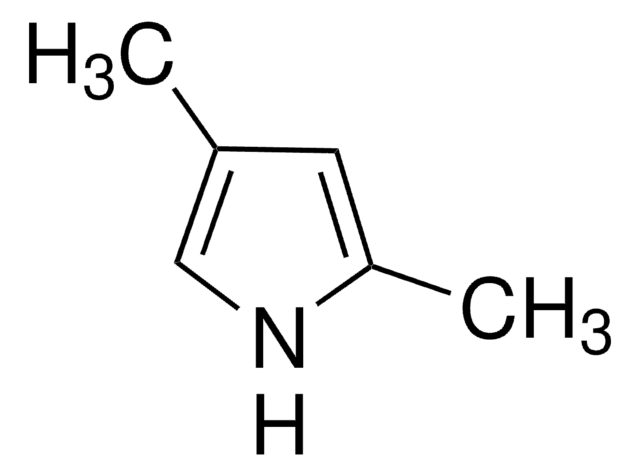M6762
1-Methyl-2-pyrrolidinone
Synonym(s):
1-Methyl-2-pyrrolidone, N-Methyl-2-pyrrolidone, NMP
About This Item
Recommended Products
vapor density
3.4 (vs air)
vapor pressure
0.29 mmHg ( 20 °C)
0.99 mmHg ( 40 °C)
autoignition temp.
518 °F
expl. lim.
9.5 %
refractive index
n20/D 1.47 (lit.)
bp
202 °C (lit.)
81-82 °C/10 mmHg (lit.)
mp
−24 °C (lit.)
solubility
ethanol: miscible 0.1 mL/mL, clear, colorless (10%, v/v)
H2O: miscible
acetone: miscible
benzene: miscible
chloroform: miscible
diethyl ether: miscible
ethyl acetate: miscible
density
1.028 g/mL at 25 °C (lit.)
storage temp.
2-8°C
SMILES string
CN1CCCC1=O
InChI
1S/C5H9NO/c1-6-4-2-3-5(6)7/h2-4H2,1H3
InChI key
SECXISVLQFMRJM-UHFFFAOYSA-N
Looking for similar products? Visit Product Comparison Guide
Other Notes
Legal Information
Signal Word
Danger
Hazard Statements
Precautionary Statements
Hazard Classifications
Eye Irrit. 2 - Repr. 1B - Skin Irrit. 2 - STOT SE 3
Target Organs
Respiratory system
Storage Class Code
6.1C - Combustible acute toxic Cat.3 / toxic compounds or compounds which causing chronic effects
WGK
WGK 1
Flash Point(F)
195.8 °F - Pensky-Martens closed cup
Flash Point(C)
91 °C - Pensky-Martens closed cup
Personal Protective Equipment
Certificates of Analysis (COA)
Search for Certificates of Analysis (COA) by entering the products Lot/Batch Number. Lot and Batch Numbers can be found on a product’s label following the words ‘Lot’ or ‘Batch’.
Already Own This Product?
Find documentation for the products that you have recently purchased in the Document Library.
Our team of scientists has experience in all areas of research including Life Science, Material Science, Chemical Synthesis, Chromatography, Analytical and many others.
Contact Technical Service







